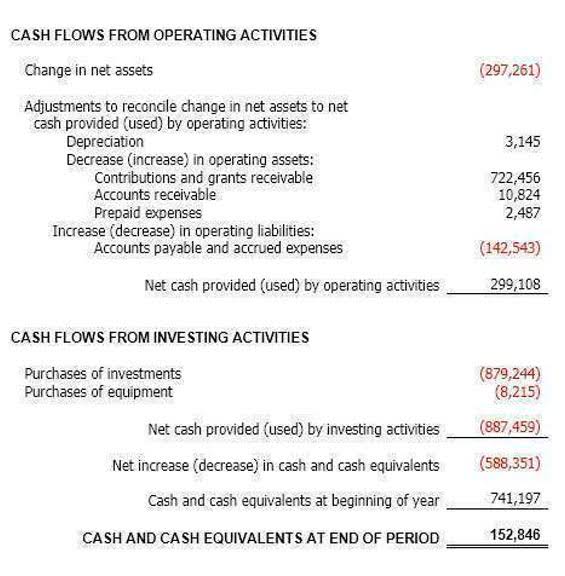Tin tức
Horizontal Analysis Overview, Key Metrics, Example

Per usual, the importance of completing sufficient industry research cannot be overstated here. In each industry, market participants attempt to solve different problems and encounter various obstacles, resulting in financial performance that reflects a given industry’s state. With horizontal analysis, you uncover trends, spot red flags, and track progress like a pro. Learn how to use the Stockhistory function in Excel to retrieve historical data quickly for horizontal analysis. Even with a powerful tool like horizontal analysis, it’s easy to fall into a few traps that can skew your insights or lead to poor decisions. This will give you an understanding of how each item has changed from the base year to the current year.
Step 2: Selecting the Time Periods for Comparison
While horizontal analysis is primarily used for financial data, it can also be applied to non-financial data to identify trends and patterns. Understanding the trends revealed by horizontal analysis can shine a light on operational inefficiencies. For example, if revenue is growing steadily but profit margins are declining, it may indicate rising costs or QuickBooks inefficiencies in production.
The Financial Modeling Certification

Through horizontal analysis, we can observe that while the absolute increase in net income remained the same ($20,000), the rate of growth slowed down in the third year compared to the second year. The absolute change measures the difference in the value of a financial statement item between two periods. Failing to account for external factors—such as economic downturns, regulatory changes, or shifts in market conditions—can result in a misleading horizontal analysis. Incorporate a review of these external variables to provide context to the trends you observe. Through horizontal analysis, finance teams can not only track performance over time but also pinpoint specific areas that require deeper scrutiny, enabling proactive decision-making and strategic adjustments. For FP&A leaders and other financial strategists, horizontal analysis is one of the most important tools in their analytical arsenal.
Horizontal or trend analysis of financial statements
- Vertical analysis compares line items within a statement in the current year.
- By dividing the net difference by the base figure, the percentage change comes out to 25%.
- This analysis ensures transparency and compliance with accounting standards, allowing stakeholders to make informed decisions.
- To further understand the application, let’s consider another example involving net income over three years.
- By tracking key metrics over time, businesses can identify whether they are lagging behind or leading the market.
Drag down the cell with the formula to copy it to the other revenue line items, Accounting for Churches as well as the total net revenue. Get instant access to video lessons taught by experienced investment bankers. Learn financial statement modeling, DCF, M&A, LBO, Comps and Excel shortcuts. As in the prior step, we must calculate the dollar value of the year-over-year (YoY) variance and then divide the difference by the base year metric.
If you happen to choose a particularly bad time period for your base values, the values for your comparison period may look much better than they are. Select the base and comparison periods and the values for your chosen variable, then calculate the percentage change between them. Calculating this involves subtracting the base period’s value from the comparison period‘s value, dividing the result by the base period’s value, then multiplying by 100. A fundamental part of financial statement analysis is comparing a company’s results to its performance in the past and to the average industry benchmark set by comparable peers in the same (or adjacent) industry. With this type of report it is easier to spot trends in the financial information.

You can do horizontal analysis using only two periods for the comparison, but it’s highly recommended you use more to avoid drawing and acting on less accurate conclusions. We’re diving into some real-life examples that’ll make horizontal analysis as easy as pie—or at least easier than understanding your phone bill. Vertical and horizontal analyses are both tools for financial statement analysis, but they differ in purpose. If the comparison year is year 3, then we will input the net income of year 3 and compute the percentage change between year 3 and year 1 (base year). In this GKSR example above, we can identify the YoY growth rate using a horizontal income statement analysis. By dividing the net difference by the base figure, the percentage change comes out to 25%.
Anyone can use the horizontal analysis formula to uncover insights that go beyond surface-level stats. Looking ahead, the role of analysis will only grow in importance as companies face an increasingly dynamic and competitive financial landscape. Future developments horizontal analysis formula in data analytics and artificial intelligence promise to further refine these techniques, enabling even more precise forecasts and strategic insights. To illustrate the practical applications of horizontal analysis, let’s examine a real-world example involving a manufacturing company, ManufacturingCo, Inc.


By analyzing historical financial data, lenders can gauge the ability of borrowers to repay loans and manage debt obligations. The most significant differences are highlighted by calculating the absolute changes in all figures on the financial statements. In 2020 Smith conducted research that suggests “firms are able to decrease financial discrepancies by up to 22%” by identifying significant absolute changes.
The first step to performing a horizontal analysis is to calculate the net difference — in dollar terms ($) — between the comparable periods. We’ll start by inputting our historical income statement and balance sheet into an Excel spreadsheet. In fact, there must be a bare minimum of at least data from two accounting periods for horizontal analysis to even be plausible.





